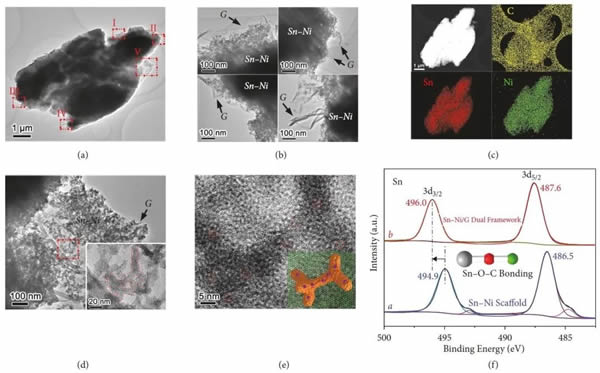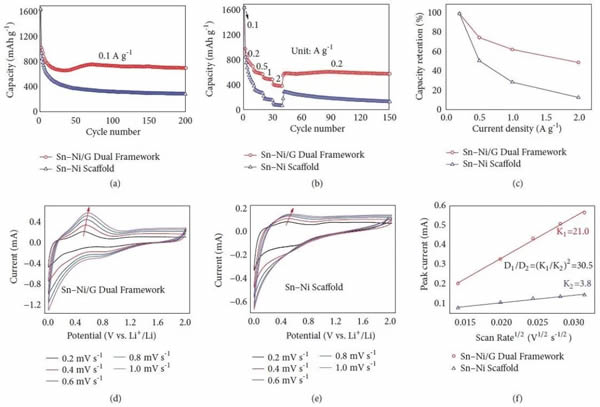The Yu Guihua team at the University of Texas at Austin proposed a dual-network gel reduction strategy that combines a frame structure alloy anode material with three-dimensional graphene to form a double-frame material that is physically cross-linked and chemically bonded. The dual-frame material also exhibits fast and stable lithium storage behavior. Relevant achievements were published in the research journal under the title "Chemically Binding Scaffolded Anodes with 3D Graphene Architectures Realizing Fast and Stable Lithium Storage" (Research, 2019, 8393085, DOI: 10.34133 / 2019/8393085). Research Background Three-dimensional graphene is gradually becoming an ideal composite medium for improving the energy storage and electrocatalytic performance of electrochemically active materials. However, in the application of lithium storage, the anode material in the composite mostly exists in the form of mutually free nanoparticles and only physically adheres to the surface of graphene, so it is easy to fall off and agglomerate from graphene and lead to capacity attenuation. Research progress The Yu Guihua team at the University of Texas at Austin proposed a dual-network gel reduction strategy to prepare physically cross-linked and chemically bonded integrated graphene-based dual-frame materials for high-performance lithium-ion battery anodes. Taking the tin-based alloy anode material as an example, an integrated double network consisting of graphene oxide gel and cyano bridged (Sn–N≡C–Ni) coordination polymer gel (tin-nickel cyanide gel) was first constructed The gel can be further reduced to produce a Sn-Ni / G dual-frame material interwoven with Sn-Ni alloy frames and three-dimensional graphene (Figure 1). Among them, the Sn-Ni alloy frame and the three-dimensional graphene are highly uniformly distributed, and the oxide component on the surface of the amorphous alloy is conducive to the formation of strong Sn-O-C bonds between the two, further enhancing the synergy in energy storage applications ( figure 2). As a negative electrode for lithium ion batteries, the double-frame structure has excellent stability and mixed ion transport channels. At the same time, the interface Sn–O–C bond further stabilizes the structure and accelerates charge transfer. Therefore, the Sn–Ni / G double-frame material exhibits Good cycle stability and rate characteristics (Figure 3). After 200 cycles at a charge and discharge rate of 0.1 A / g, its reversible specific capacity is as high as 701 mAh / g; at a large rate of 1 A / g, its average specific capacity is still as high as 497 mAh / g. Faucet control handle is divided into single handle and double handle. The single handle is characterized by convenient control and simple structure. Single Handle Faucet in use, to slowly open and close. Suitable for bathroom, toilet. Single Handle Faucet singel handle vessel faucet,wide spread lavatory faucet,lavatory faucet collection single handle lavatory faucet,single handle lavatory faucet,4" single handle lavatory faucet SUNRISE HOME GOODS(M)SDN.BHD. , https://www.sunrisesink.com
Figure 1 Schematic diagram of the synthesis of Sn-Ni / G double-frame material 
Figure 2 Morphology, composition and structural characterization of Sn-Ni / G double-frame materials 
Figure 3 Electrochemical properties of Sn-Ni / G double-frame materials